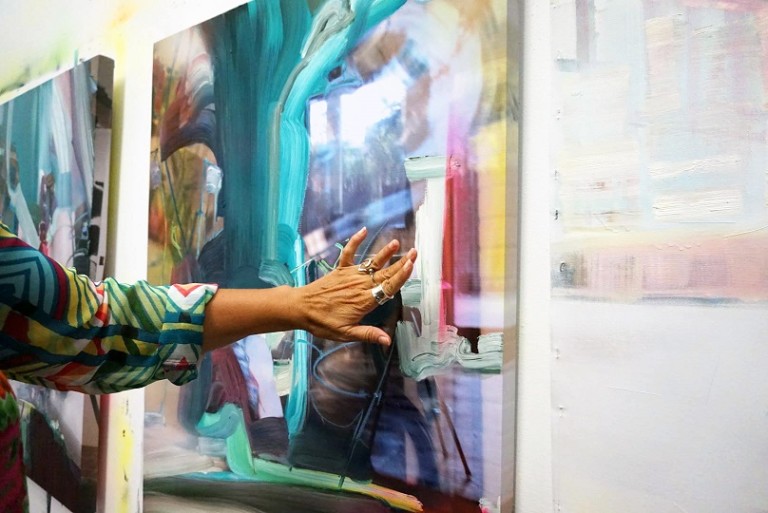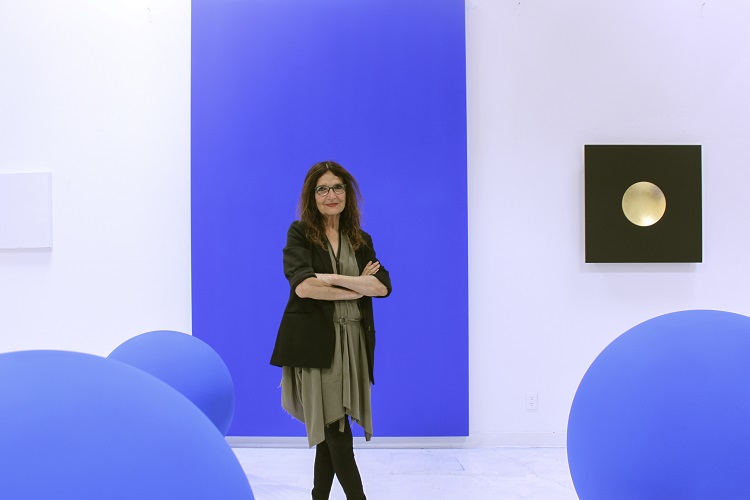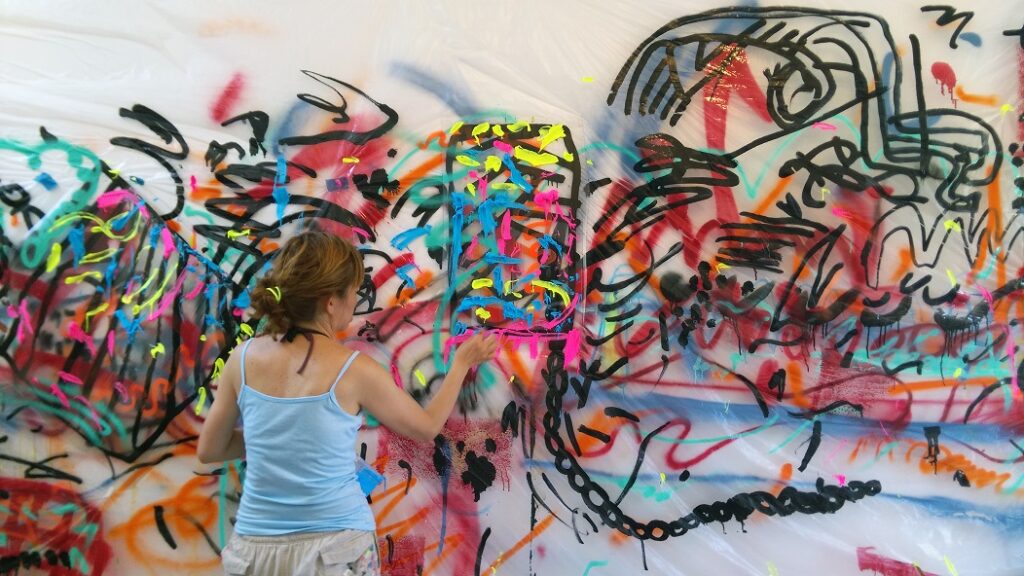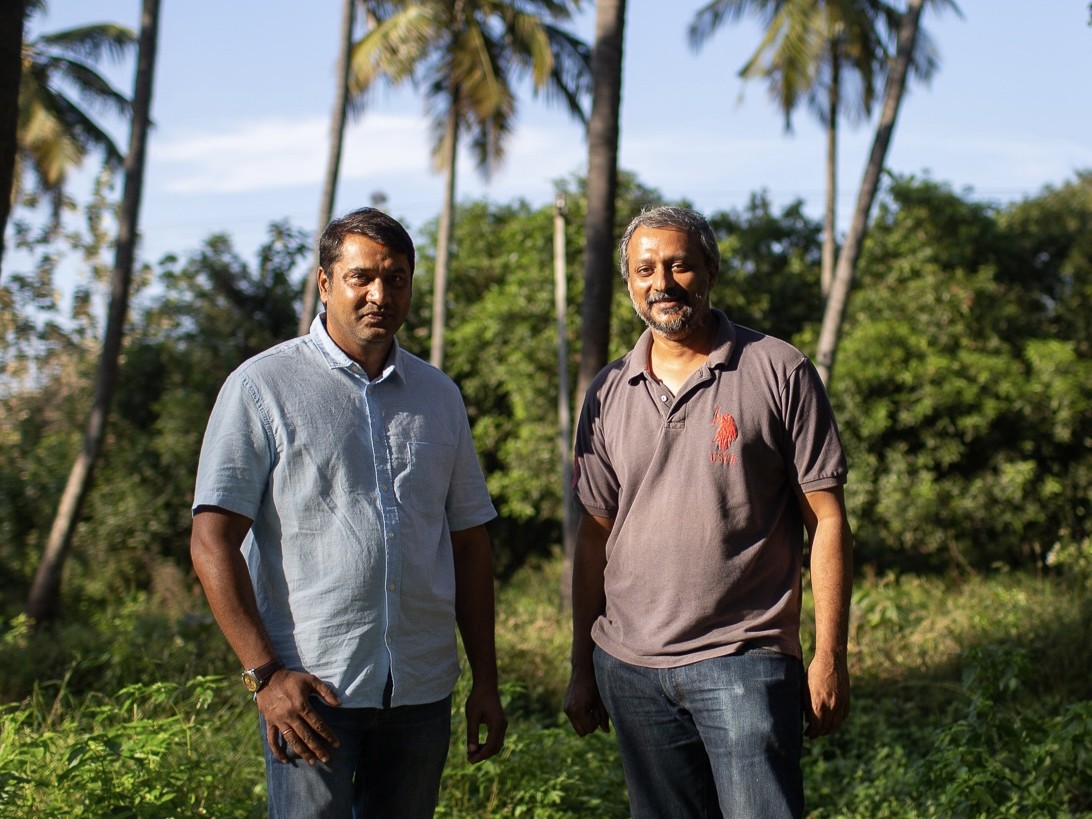When artist Susanna Bixby Dakin and writer Linda Frye Burnham founded Santa Monica’s 18th Street Arts Center in 1988, they wanted to break a common cycle: Artists move into a neighborhood with cheap rents, the neighborhood becomes trendy, housing prices rise, and the artists have to leave. What would happen if the artists could stay?

With this in mind, Dakin and Burnham purchased five buildings on an acre-plus lot in Santa Monica’s Pico neighborhood. They turned it into a non-profit arts center and specified that the site could never be sold for any other use. Since then, 18th Street has evolved from a small, alternative, artist-run space into the longest-running artist residency center in Southern California. It has provided living or working spaces for more than 8,000 artists over the years.
The center now includes 19 live-work and studio spaces for artists, three galleries, a performing arts space, and housing for several non-profit arts organizations. Angelenos accepted into the program can rent studios for three to five years at rates under half of market rents. Visiting artists, from abroad as well as the U.S., are eligible for residencies of one to three months.
“By providing affordable studios and creative spaces where artists can develop their work, 18th Street plays an important role in nurturing the arts, both in Southern California and internationally,” says Reed Mayfield, lending manager for RSF Social Finance.
Inspiration: Space for Struggling Artists
When Dakin and Burnham started the center, they were running High Performance, a magazine devoted to the then-nascent performance art world. They were attuned to the emerging arts scene, and realized that what struggling contemporary artists needed, more than anything, was space.
Artists in residency at 18th Street now get more than an affordable place to work. They also get valuable exposure, in Los Angeles and beyond
“A residency at 18th Street confers a certain level of recognition and access,” says Jan Williamson, the center’s executive director. “It’s an opportunity for artists to gain recognition as well as develop new work.”

Since its inception, the center has hosted 400 visiting artists from 50 countries. Among its most notable graduates are San Francisco–based Guillermo Gómez-Peña, a MacArthur fellow, and Indonesian Heri Dono, who represented his country at the 2015 Venice Biennale.
While ownership of the property provides 18th Street with the power to keep rent prices affordable, it also adds a challenge familiar to any homeowner: upkeep.
“We have five midcentury warehouses that need constant maintenance,” says Williamson. “It’s a huge capital investment.”
Several years ago, the 18th Street board of directors decided to refinance the center’s mortgage to reduce its rate to market level and free up cash for improvements. The mortgage was just over $1 million, but a dozen banks turned the center down, largely because its assets were not liquid, says Williamson.
After two years of looking, the board finally had an offer in hand. At the same time, Williamson connected with RSF through a colleague in the art world.
“When I met with lenders from RSF, my first thought was, ‘This is too good to be true,’” says Williamson. “I was very skeptical, to be honest.”
Mission Fit: Creative Economy Partnership
Williamson asked RSF to match the other lender’s terms, which it did.
“We really had to stretch on the terms because it was a competitive situation,” explains Mayfield. “We wanted to make the loan because we think 18th Street delivers tremendous social value with the infrastructure they provide for both artists and creative economy businesses.”
It felt like a fit. “RSF is really a partner to us,” says Williamson. “They believe in our mission and the work we do, and we’re not just a loan to them.”
What really swayed the board, though, was that RSF also offered to extend a construction loan to replace one of the center’s aging buildings and expand its facilities so it could meet growing demand.
The center receives four to five inquiries a week from artists looking for studio space, as well as requests from partners such as the Los Angeles County Museum of Art to host visiting artists, notes Williamson, adding, “Honestly, if we could build even more studios, we would.”

Impact: Expanding Support for Contemporary Artists
Because of the mortgage from RSF, 18th Street is now paying down the principal on its loan more quickly, putting the organization on a faster road to financial freedom. Furthermore, RSF demonstrated its commitment to the arts by facilitating a Shared Gifting Circle at the site, from which 18th Street received a grant for programming.
In 2017, with the help of the RSF construction loan, 18th Street plans to break ground on a project to replace a deteriorating building with 12 additional studio spaces. It is also redesigning the campus to make it more pedestrian friendly and to draw more visitors from the soon-to-open light rail Metro station next door. Most important, 18th Street will be able to continue performing its vital mission of supporting contemporary artists.
“People often think contemporary artists are not as important as historical artists, who have proven their worth over time,” says Williamson. “But we can’t anticipate who will be important and who will not, except for an educated guess. What we’re doing is supporting artists as they create new work today.”
by Megan Mendenhall
Megan Mendenhall is the former Marketing Associate at RSF Social Finance.


